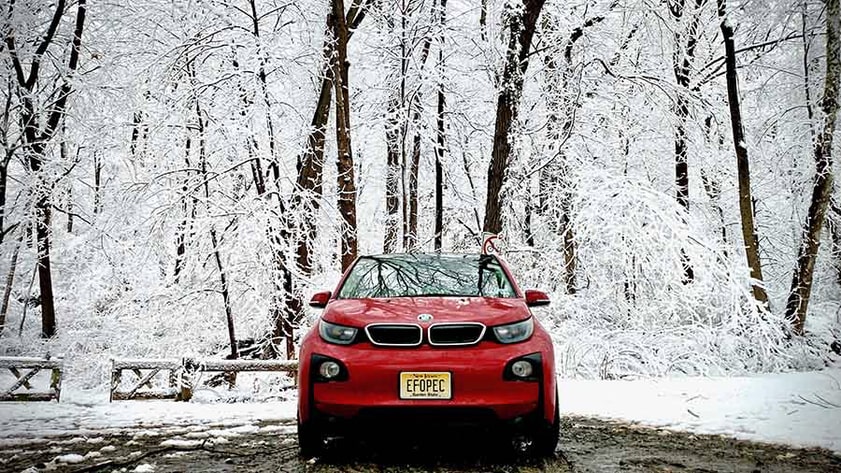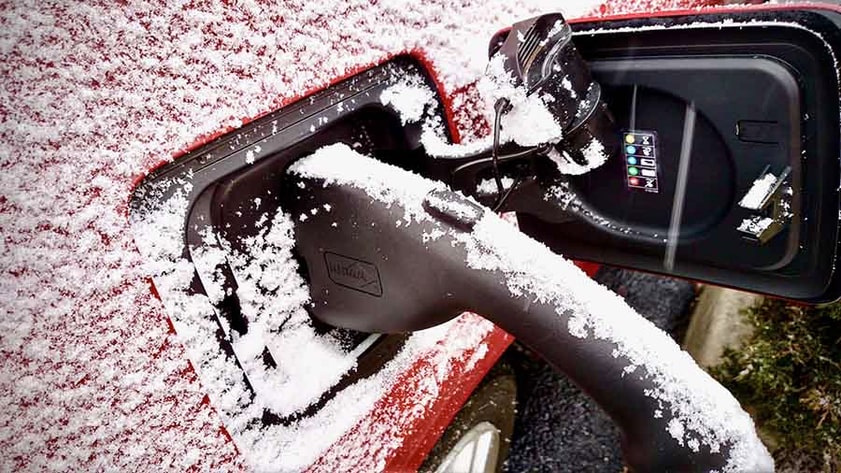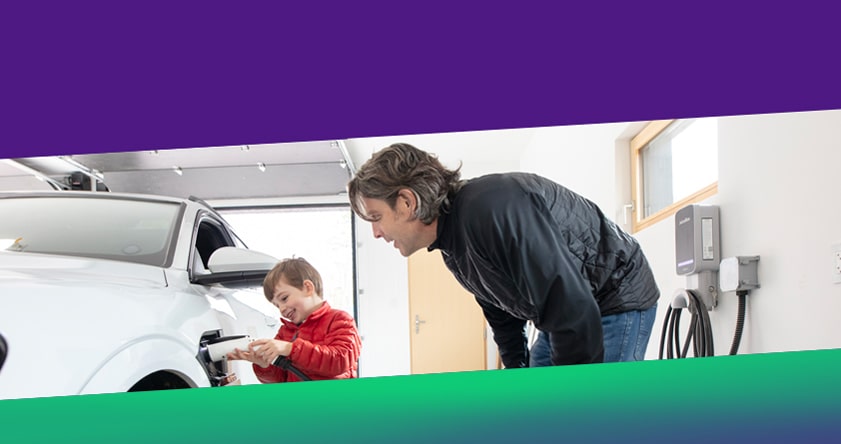Embracing the Polar Vortex: Plug-in Electric Vehicle Edition
Hot Tips for Driving An EV in Cold Weather

The cold reality is that driving in the winter is more challenging for everyone. Both internal combustion engine vehicles and electric vehicles suffer from efficiency losses when it is freezing outside. However, the recent polar vortex shouldn’t fog anyone’s thinking about the overarching benefits of driving an EV in cold weather climates. Yes, electric vehicle performance is affected by extreme temperatures, but there are ways to manage range and efficiency in the winter months. This guide on winter car prep will teach you everything you need to know to keep your electric vehicle running in tip-top shape all winter long.
Hot Tip #1: Precondition.
Use the car’s precondition function as much as possible. Road conditions can be rough during the dead of winter compared to warmer climates. Most modern EVs have a preconditioning feature that will preheat the battery and passenger cabin. This allows you to depart comfortably with a fully charged and heated battery and cabin. Most electric vehicles allow you to set the preconditioning to begin every day at a set time, so your car is ready for you when you need to depart. Also, make sure your car is actually plugged in while you precondition, because you want to draw energy from the grid to do this, not drain your battery. Some EVs won’t precondition if the car is using a level 1, 120v portable charger, because they won’t provide enough energy to properly precondition. This is another reason why it’s advisable to use a level 2, 240v charging station, like our JuiceBox smart home charger.
Hot Tip #2: Okay to roast your rump, but use cabin heat judiciously.
EVs don’t use waste engine heat to warm the cabin like internal combustion cars do. Therefore, they need to generate the heat, and that can consume a lot of energy. Use the cabin heater sparingly if you really need to get the most range possible on a particular trip. If your car is equipped with a heated steering wheel and seats, use those options because they consume much less energy than the cabin heater does.
Hot Tip #3: Top off your all-season tires.
Your tire pressure will decrease roughly 1lb for every 10 degrees fahrenheit drop in temperature. Underinflated tires are not only dangerous, but will wear out faster and are much less efficient than properly inflated ones. This loss of efficiency can rob your electric car of many of its precious miles of range. Every tire has its own recommended psi. For example, the BMW i3s has a recommended pressure of 33 psi for the front tires and 41 psi for the rear tires, so make sure you check your tire pressure weekly in the winter months, and top off as needed. If you are in extreme weather conditions, it’s not a bad idea to have a spare tire ready to go. At the very least, do a tires check to ensure the pressure, tread, and overall condition.
Hot Tip #4: Use Eco Mode.
Most electric vehicles have an “eco mode” setting to help extend the range of the car. This setting can be very useful in colder driving conditions when you need to squeeze out as much range as you can. The eco mode will usually reduce electric motor power, and in some vehicles, it also cuts some of the power to ancillary devices like the cabin heater and other electronics. You should also consider using eco mode whenever driving on ice or snow-covered roads. Since it reduces the power to the drive motor, there’s less of a chance of wheel spin and possible loss of control.
Hot Tip #5: Slow down.
Besides preconditioning and conservative use of the cabin heater, driving a little slower is perhaps the best winter car prep tip to extend your vehicle’s range. This is true regardless of the ambient temperature. However, during the winter months driving a little slower can help offset the range you lose to the cold temperatures. If you simply drive a few miles per hour slower on the highway, you’ll gain back much of the range you lost by the cold driving conditions. Also, try to accelerate slowly from standstills. Jack-rabbit launches are definitely fun with the instant torque your EV provides, but they do consume a lot of energy.
Hot Tip #6: Time your charge accordingly.
The act of charging your EV actually warms the battery itself. Therefore, if you time your charging to end close to the time you need to depart, the battery will have warmed itself and you won’t even need to use extra energy to precondition it. This is another example of how a smart charger like the JuiceBox can be useful. You can set your JuiceBox to start charging at a specific time, so that the charging process is just finishing up when you need to leave in the morning. This feature also allows owners that have Time of Use electricity plans to save money on their electricity bill.
Still better than ICE vehicles in ice-conditions.

While it may take a little extra planning, some efficient use of the cabin heater, and driving a little slower, you can definitely offset the cold-weather effects. Plus, battery technology is advancing rapidly, and the new electric car models that are coming out, have much longer than the EVs from the past few years. The average driving range of all EVs has increased by more than 50% in the past six years, and that trend seems to be continuing. As range increases, the loss of range becomes less impactful. Furthermore, the next generation of electric vehicle batteries promises to be in solid-state form, which don’t rely on the liquid chemical reaction that current lithium-ion batteries do, and as a result won’t be as affected by the cold temperatures. So hopefully, driving an EV in ice conditions will become another benefit that trumps ICE vehicles. As long as you check your auto parts and wheels and improve your driving habits, you’ll be ready to go this winter season. By following these preventive maintenance tips, you should have no problems tackling those icy roads and difficult climates.
Enjoy & brave the snow, Juice Family



